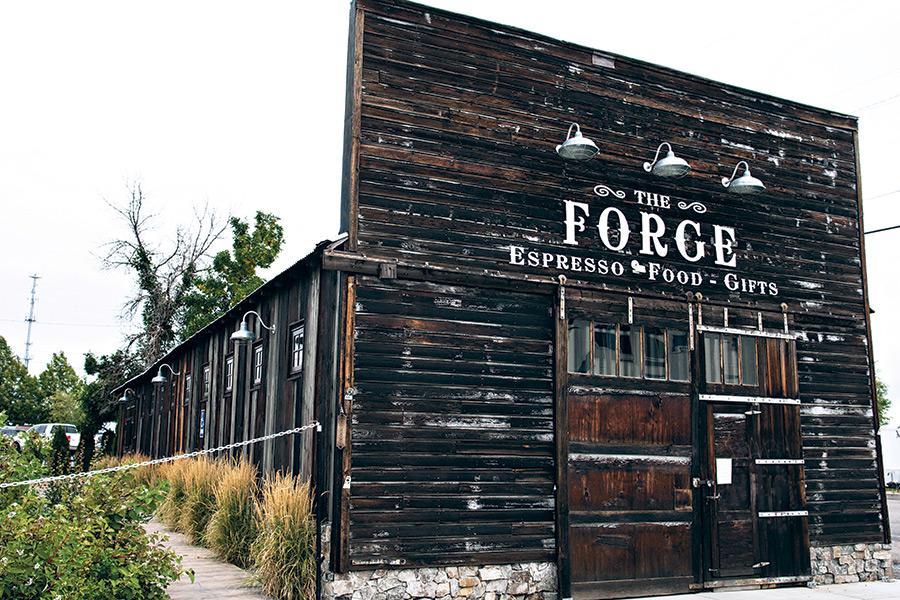At 227 First St. W. in Kalispell stands a building that is both a relic of early industry and a testament to thoughtful, historic preservation in the Flathead Valley.
In 1913, Mort Fuller and Harry E. Jones joined their respective businesses and established their “Fuller & Jones” blacksmiths shop at the location. It was a time when the work of a farrier and that of a blacksmith were practically one in the same: both were necessary to keep horses and buggies moving about. And for more than 70 years since, the building has been used for blacksmith work of some kind or another.
Fuller met an untimely fate in 1916, but Jones kept the business going until he sold it to namesake Paris L. Boyd in 1934. Paris also met a sudden, untimely fate in 1936. His son Glen R. Boyd took over the blacksmithing business and kept it going through trying times and World War II. Glen Boyd then sold the business to James Schmauch in 1947. Schmauch continued the blacksmithing tradition at the location through the early 1980s.
Schmauch was the man behind “Jimmy’s Welding.” During the span of five decades, Schmauch was regarded for his square dealing when it came to fixing cars, trucks, farm implements, and nearly anything else that could benefit from a well-formed weld. He was also known for his charitable work, as Schmauch was known to repair wheelchairs and kids’ bikes for free.
Perhaps this partly explains why the place seems to retain a sense of humility – the kind born of an industriousness mix of humbleness, honesty and hard work (the kind still found throughout the Flathead Valley, yet can seem noticeably absent elsewhere).
Schmauch retired in the 1980s and the building lingered in the Schmauch family for several years. The place withered and weathered its time until the early 2000s, when it was re-discovered by Judy and Ken Sederdahl.
The Sederdahls were looking for a place to open a place for good food and good music when quite by happenstance, the “old blacksmith shop” came to their attention. At the time, the building was better suited for wrecking than preserving. Fortunately (and much like the history of the blacksmithing work that took place within the walls of the place), the Sederdahls proved how hard work, persistence and thoughtful restoration can revive even the most dilapidated of places.
The Sederdahls’ efforts in restoring the building are nothing short of transformational. Their work is of accolade-quality and quite the epitome of adapting an old space to a new use while preserving its historic character.
For indeed, the building has witnessed the passing of the horse-and-buggy era, the dawn and modernization of the automobile, and the rest of the celebrations and calamities of the 20th century. Even the very nature of blacksmithing work seemed to have challenged the place from time to time. Persistent scorching from blazing ovens and flying sparks and incidental fires caused by welding torches in more recent years have left their marks. while the nicks and gashes about the floorboards, and the nearly original false-front facade also attest to the labored history of the place.
Jaix Chaix appreciates history and architecture. Share ideas and facts with him at [email protected] or at facebook.com/flatheadvalleylandmarks. He is teaching another “Historic Homes of Kalispell” course at FVCC this fall, and guiding “cemetery walks” at the Conrad Memorial and Demersville cemeteries.
